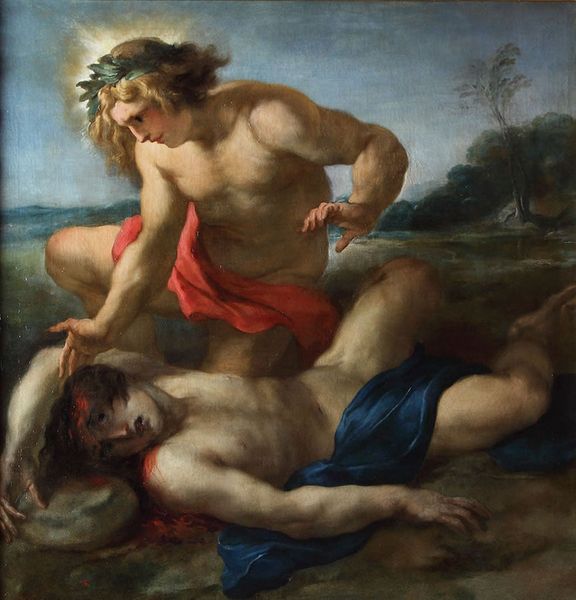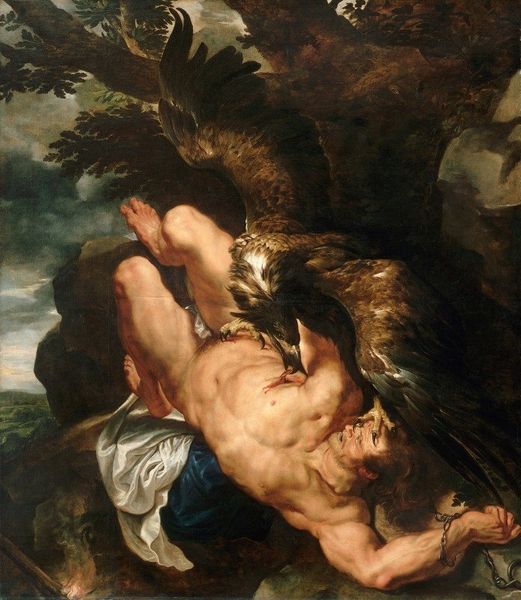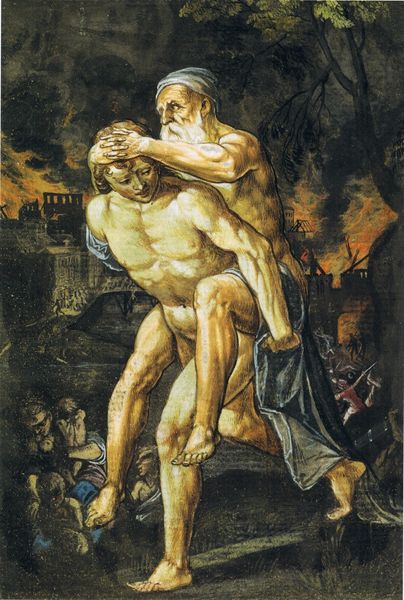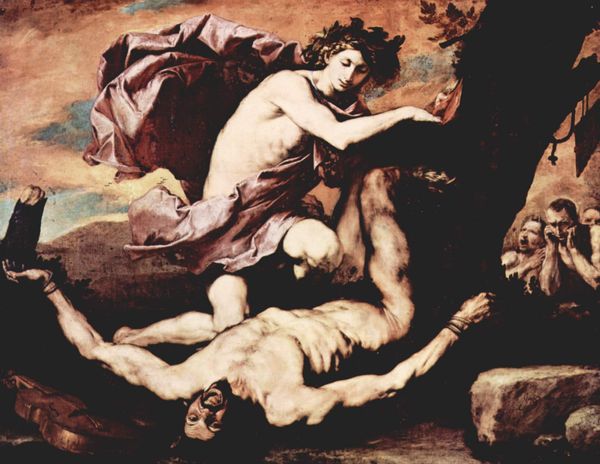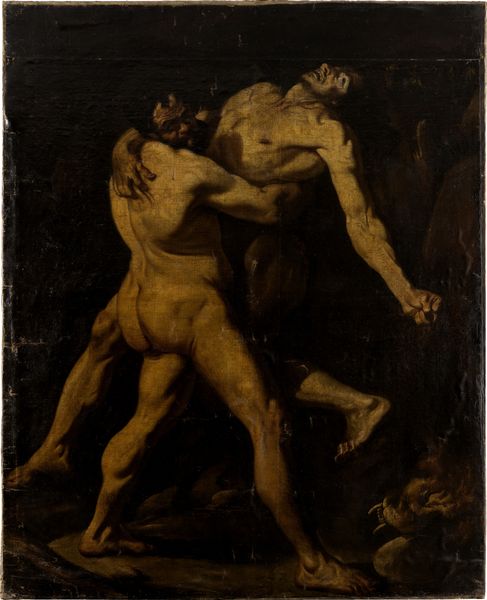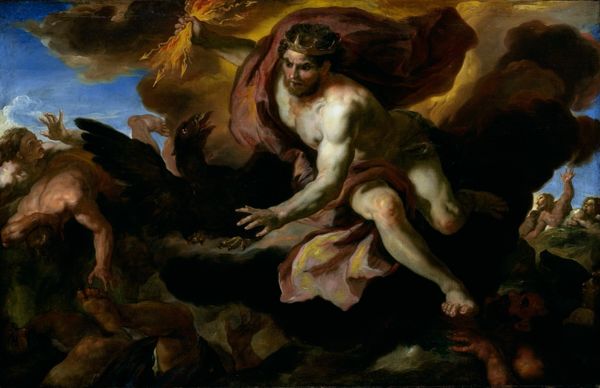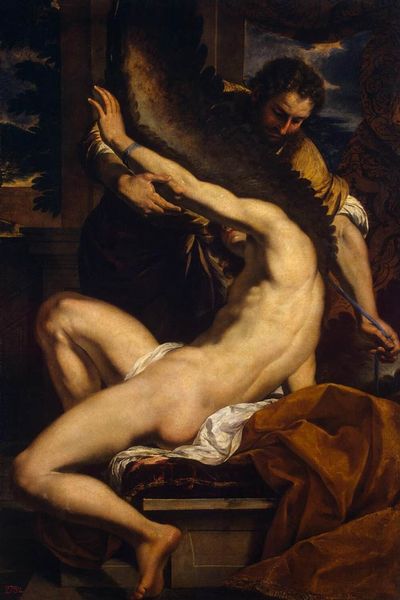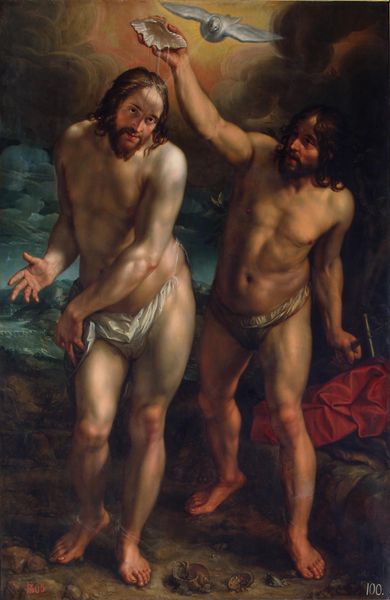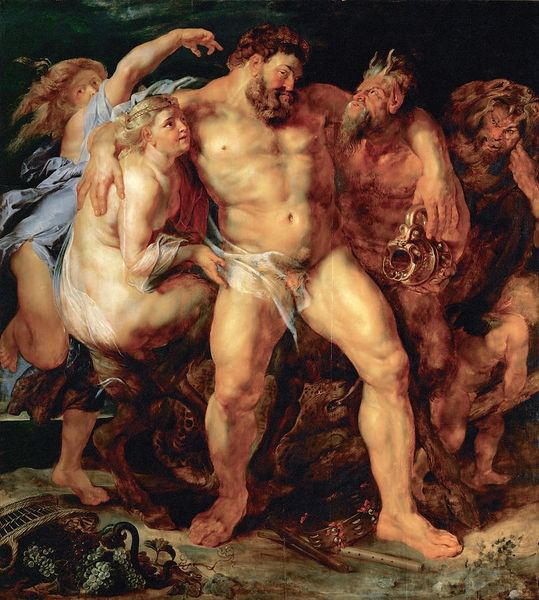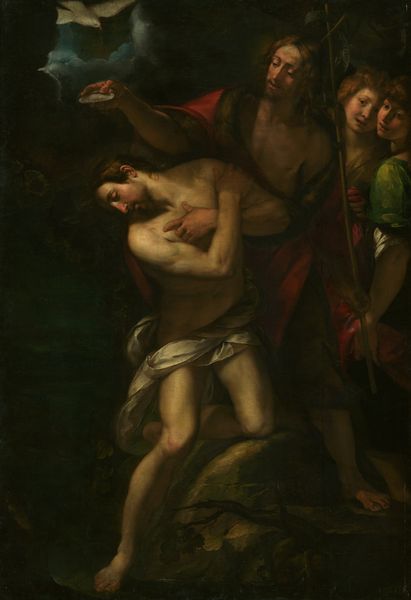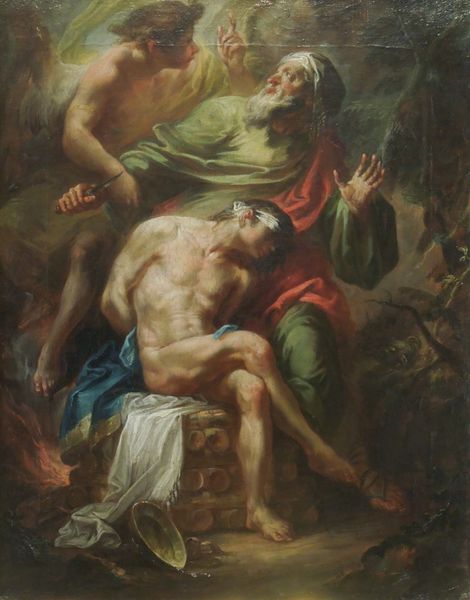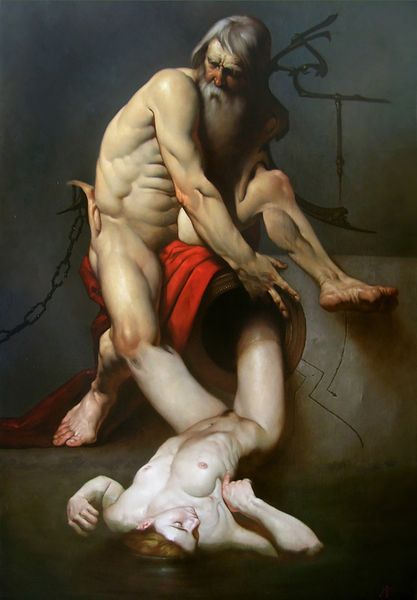
oil-paint
#
baroque
#
oil-paint
#
figuration
#
oil painting
#
history-painting
#
nude
Copyright: Public domain
Curator: This oil painting presents a really raw, visceral image. It's unsettling—the dramatic figures, the contrast of light and shadow... I'm immediately struck by the sheer violence of the scene. Editor: Indeed. This compelling piece is titled "Cain slaying Abel", often attributed to Peter Paul Rubens. While its date is uncertain, we recognize the Baroque style and its emphasis on drama. Curator: The choice of depicting Cain and Abel resonates deeply within a Christian framework. The stark contrast in the offering made by Cain and Abel touches at deeper seated conflict. Is this piece suggesting a deeper seeded jealousy? Editor: You've hit on a critical point! Envy. Betrayal. Loss of innocence. And, of course, sacrifice. Cain’s offering was not accepted because it wasn’t offered out of true sacrifice to God, not because it was produce, the work of the "inferior farmer". Cain embodies a potent symbol of spiritual failing across centuries. Consider the significance of how frequently that exact posture, Cain's hand raised over his victim, is repeated in artworks about assasination. Curator: The figure of Abel also presents another important visual point. Visually, notice the way that the naked figure creates a classical association, which feels distinct when placed along the brutal slaying taking place on the figure. Also interesting is the altar behind, still smoldering from their attempted sacrifices to God. It raises so many ideas regarding religion in this painting. Editor: And Rubens masterful use of light to highlight key details intensifies the story's emotion. Abel’s pallid complexion compared to Cain’s ruddy glow...it's visually communicating the idea of innocence in stark contrast to jealousy. What's equally impactful is thinking about where this might be shown to the public - the politics behind the church displaying images about mankind's innate capacity to betray those who love them most is something not always acknowledged. Curator: Agreed. It's impossible not to be profoundly moved by such a graphic representation. Editor: Rubens uses color to evoke visceral feelings—drawing the viewer into its exploration of good and evil. It challenges its observers even now.
Comments
No comments
Be the first to comment and join the conversation on the ultimate creative platform.
